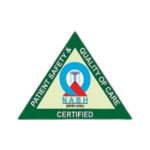BONE AND JOINT INFECTION
What is Bone and joint infections?
Bone and joint infections cause serious morbidity and pose significant management challenges. They may cause acute sepsis with bone and joint destruction, chronic pain, discharging wounds and permanent disability. With expanding populations and increasing age, bone and joint infections, especially those involving devices, will have a growing impact on healthcare resources. For effective management, well-coordinated multidisciplinary working is important.
- In suspected bone and joint infections quality microbiological sampling is important. In those with features of sepsis or acute skin and soft tissue infection (SSTI), blood cultures and, where possible, aspirates should be taken immediately followed by prompt empiric antibiotic therapy. In other cases antibiotic therapy should wait until intraoperative samples are taken. In all acute bone and joint infections, orthopaedic surgeons, infection specialists and radiologists should be involved early
- Acute septic arthritis should be managed with diagnostic aspiration followed by prompt arthroscopy or arthrotomy and washout in conjunction with antibiotics. In some cases, where surgery may not be possible, serial closed joint aspirations might be an alternative option
- Acute haematogenous osteomyelitis needs prompt surgical drainage if there is a purulent collection. Other cases can be managed by antibiotics alone but with repeat imaging if there is failure to settle
- Patients with possible spinal infection need blood cultures, prompt MRI and spinal surgery review. In stable patients not requiring surgical intervention, a radiological biopsy should be considered to direct antimicrobial therapy. Tuberculosis, Brucella, Nocardia and/or fungal cultures should be requested in patients with appropriate risk factors
- In diabetic foot infections it is important to recognise severe limb-threatening infections that require urgent surgical management. Signs of this are systemic sepsis, poor glycemic control, gas in soft tissues, abscess and infection from an ulcer tracking deeply through the foot to another site (eg plantar ulcer to dorsum of foot).

